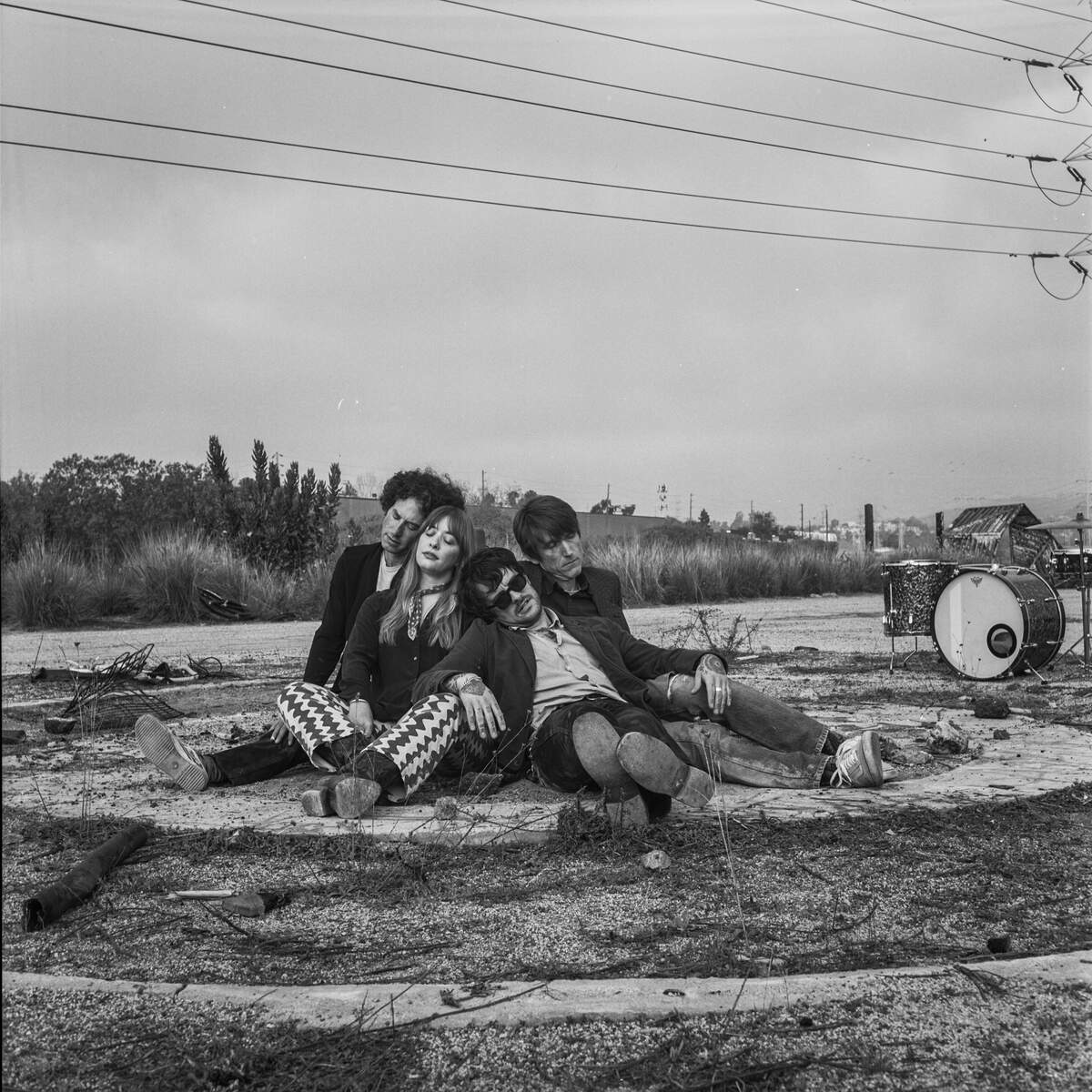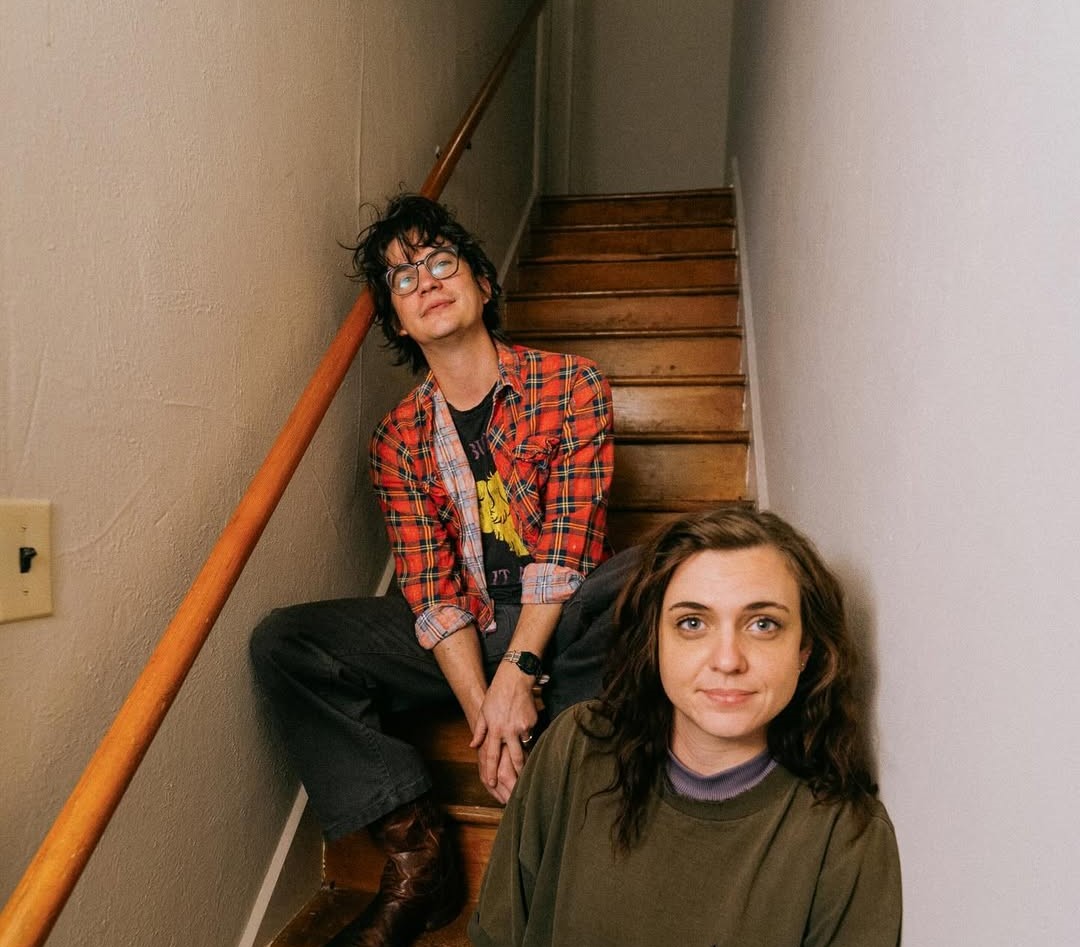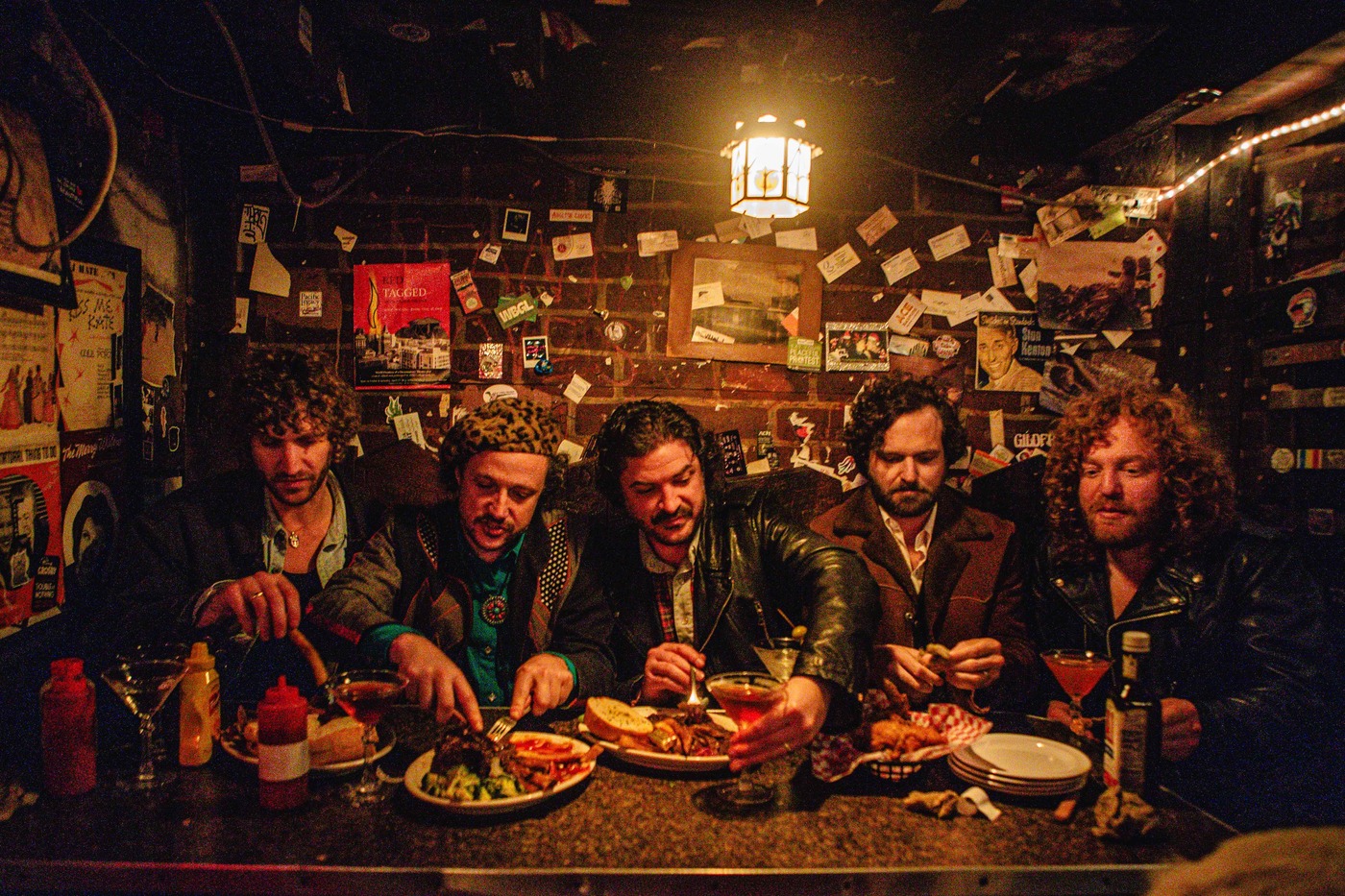Mtsyry Octobriana 1976: The Jim Rugg Interview | By Sean Mageean
50 years ago, in 1971, a public domain comic book character named Octobriana made her first public appearance in a book called ‘Octobriana and the Russian Underground’ by Petr Sadecký. In a recent, all-out interview with independent comic book creator Jim Rugg, we discussed the genesis behind Rugg’s new, must-have blacklight tribute comic to the Russian devil-woman character who represents the true spirit of the October Revolution: ‘Mtsyry Octobriana 1976’, as well as Rugg’s co-created characters Street Angel, and Afrodisiac, and his and fellow comic book luminary Ed Piskor’s superb ‘Cartoonist Kayfabe’ YouTube channel, and more.
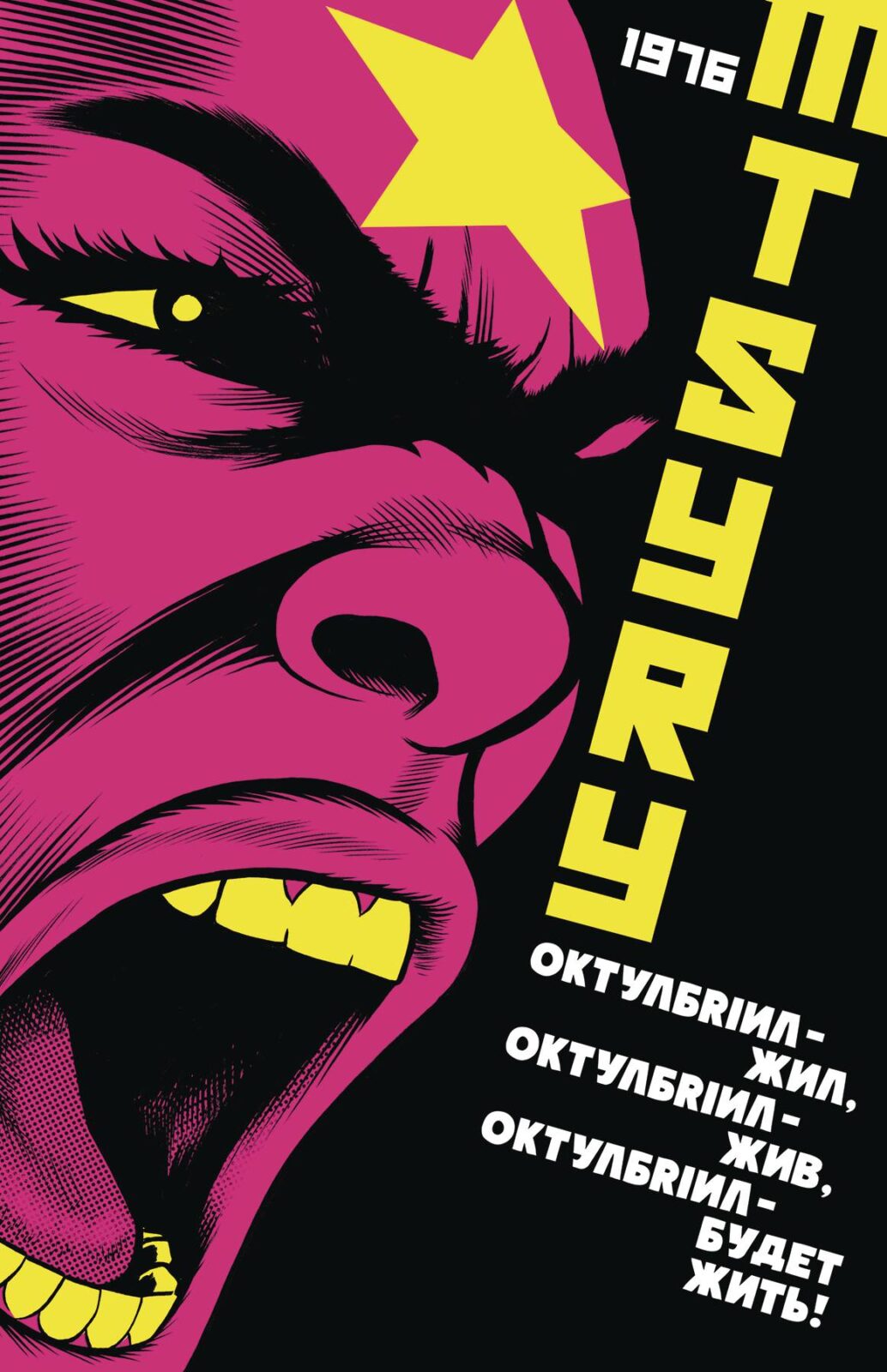
What first got you interested in the comics medium and at what point did you decide you wanted to become a professional cartoonist?
Jim Rugg: I got into comics when I was probably about ten or twelve. I always drew wrestlers and movie characters and things like that–but I didn’t read comics. And then when I got hold of a comic book, it kind of looked like what I was already drawing. You know, these action figure characters. And I saw credits for penciler or artist or whatever, and it was like this is great–this is what I want to do! And I never really got off that path.
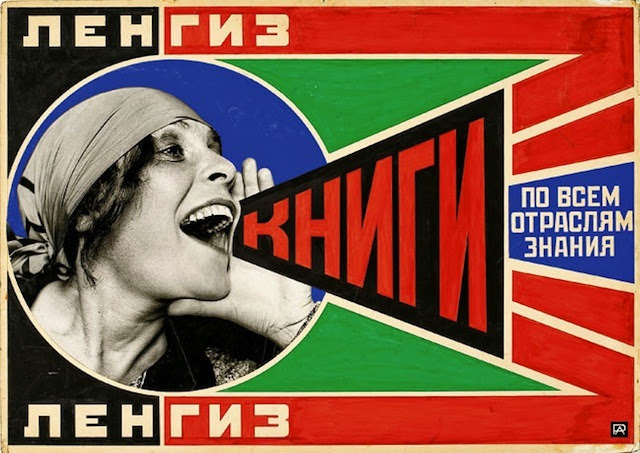
Do you have some memories of the first comics you read–or the first ones that made a lasting impression?
Absolutely! The first comic I got was a ‘Marvel Comics Presents’ issue –that’s not a very good series, and it wasn’t a very good issue–so I kind of knew that what I was responding to were comics. And then after that I started buying whatever caught my eye, and ‘Wolverine’ no. 10 was one of the first books, and it was drawn by John Buscema –and right after that I found ‘How to Draw Comics the Marvel Way’ at a book store, which is illustrated by John Buscema, and I made that connection of, oh, some of these guys are really good. And so I started following artists very early in my reading, you know, like, more than characters. And found guys like Frank Miller. You know, it was a little bit harder to find information because this would have been late ’80s to early ’90s, so pre-Internet. But I would just read whatever I could about comics; if there was, like, a local guy in the newspaper, I would read it all. If he said: ‘Go find Jack Kirby,’ or if Jack Kirby was an influence, then that would become part of my search list. And that was part of the fun, too; I used to find comics at flea markets and used book stores and places, and it was exciting just to see what I would find — but it was always looking for who’s an exciting artist who catches my eye, and then emulating them.
I read that Frank Miller, David Mazzucchelli, David Lapham, The Hernandez Brothers, and Julie Doucet are among your influences–what can you tell me about their–or other artists’– influence on you?
Yeah, that’s a good list that you named, because it kinda tracks my progress through starting with the mainstream. You know, the Frank Miller stuff was in ‘Daredevil’ and ‘Dark Knight Returns’, and Mazzucchelli, same kind of deal–‘Batman Year One’.
And then I start to get a little bit bored of superhero stuff, and that’s when I move toward indie comics–and Dave Lapham was a good one because he was doing ‘Stray Bullets’ around that time, and it’s like, ooh, a crime story! And I still liked Frank Miller who was doing ‘Sin City’– also a crime story / black and white comic; and the black and white stuff looked a lot more like what I was drawing in my sketch book, and it sort of felt like, you know, I can make comics! I’m not as good as these people–but I can make comics! And then eventually I got a little bit bored with some of the genre stuff–and that’s when I found Julie Ducet, Dan Clowes, The Hernandez Brothers…because I kept looking for comics that would engage me. And I found these alternative indie comics and I was just like–wow–these people are spectacular! And I found ‘I Never Liked You’ by Chester Brown–and that book really opened my eyes because it’s about his middle school or jr. high age…coming of age–it’s him starting to look at girls, and problems with his family at home, and stuff like that. And I read that, and if you go from Wolverine (laughs) or something to this story about a thirteen, fourteen, fifteen-year-old who can’t talk to girls and fights with his parents–it was like, wow, that’s like me! It’s like, suddenly I could relate to this and it looked totally different–the drawing style was different, the writing style was different, and it just opened my mind to, like, comics can be anything! They can be slice of life, auto-bio…
And did that lead you to read Chester Brown’s ‘Yummy Fur’ comics…?
Absolutely! That’s where ‘I Never Liked You’ was serialized. I think it’s one of the best comics series ever. I put it up there with ‘Eight Ball’ by Dan Clowes. I found a book in a museum in Chicago called ‘Dangerous Drawings’. And it’s an interview with–I dunno–fifteen alternative indie cartoonists…Clowes, Doucet, Chris Ware…I’m forgetting a million of them, but those kind of alternative cartoonists. I read that book cover to cover and then I just started tracking down as much of their comics as I could find. It was great. And anytime I’ve gotten bored with comics I’m reading, I can usually find something else. I’ve gotten into manga because it’s a whole new world of comics–different storytelling styles, different stories, new artists to follow. So it’s been kind of great with comics because anytime I start to plateau, I find something new…like Web comics–it’s a vast world.
How did you and Brian Maruca end up meeting and collaborating on ‘Street Angel’?
I had a day job when I first got out of college as a designer at an engineering company, that I did graphic design in their marketing department. Brian Maruca was the only other person about my age and also not an engineer–he was a tech writer. And so, I’d see his writing in conjunction with my work, and was like, okay–this is a good writer, I’ll have him read my comics or my scripts and give me feedback and notes and stuff. Pretty soon, very organically, we just started e-mailing ideas back and forth–basically entertaining each other at our kind of boring day job. And it just clicked– we got along really well. And the ideas that were going back and forth, I responded to them and was like, that sounds like something good to draw–and ‘Street Angel’ came out of those e-mails. In fact, the ‘Street Angel’ series came out of them, because, one of our first collaborations, I was making mini-comics. Mini-comics are just like zines–they’re photocopied, you can do a small run of them, they’re usually black and white ’cause they’re cheap and you can make ’em and give them to you friends or whatever. And there’s a comics scene for that…the Small Press Expo–SPX. There used to be one in San Francisco called APE–Alternative Press Expo…this is late ’90s/early 2000s these things were popping up. They were art comics and indie comics and literary comics–and that’s what I was making. They were cheap and easy and I would make a new one for every show–so we made ‘Street Angel’, which is this superhero, homeless ninja on a skateboard…basically the opposite of all the superhero comics that I had grown bored of. And the mini-comic just sold out at the next show that I went to. And it was like, okay, I know what I sell, and this is way better! And so, at that point we had generated a lot of ideas, just from our e-mails and stuff, and we only took one of those and made a mini-comic–we had more ideas and liked the character and she was fun to draw, and so I sent it to a publisher –Slave Labor Graphics, in California. I just thought that was a good fit because they published things like ‘Johnny The Homicidal Maniac’, and all of Evan Dorkin’s work like ‘Milk and Cheese’, and ‘Dork!’. So, they did comics that seemed to be good for a wider audience than your typical Wednesday Warrior-type boys club comics of the time. And that’s what I wanted to do–make a fun superhero comic in the time of the Dark Age of comics of a bunch of violent vigilantes…I wanted to do fun! So I sent this to SLG, they liked it, and they picked it up as a series. So, it kinda went from me doing mini-comics and small comic book shows to then suddenly a comic that was picked up and distributed internationally.
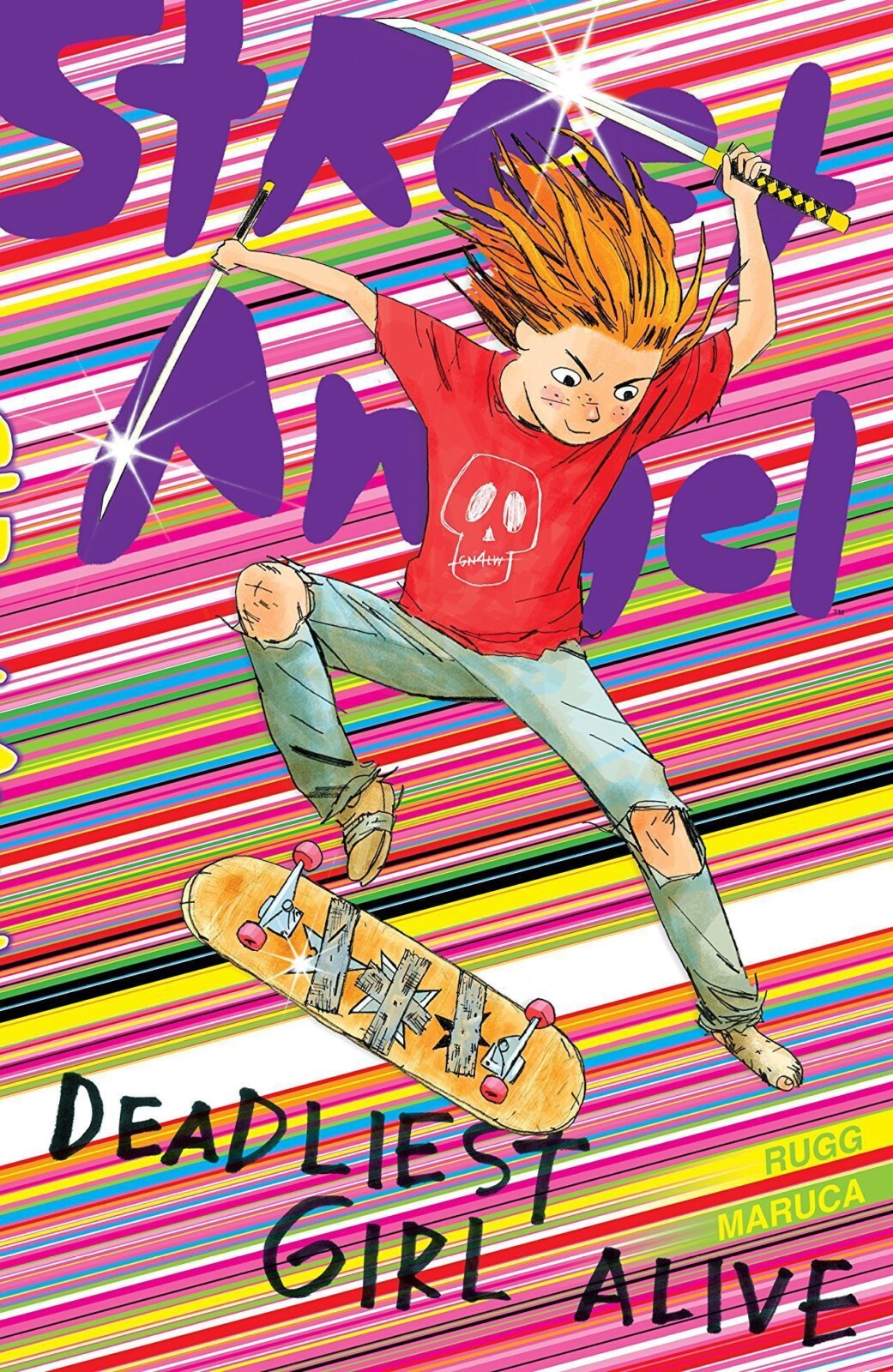
On average, when you were doing mini-comics, how many did you print–and did you sign and number them like small chapbooks or anything?
No, I didn’t sign and number those. I was really unfamiliar with book art and printed matter as being an art or prints having value. I’ve gotten to be friends with people who make books, and now I recognize that and now if I do a small run or a handmade edition I’ll sign and number it–but back then I would just photocopy a batch. In the case of the ‘Street Angel’ mini-comic, I had offset printed the cover–so, I printed 250 covers, and then I did, like, 100 or 125 interiors; and when I sold those out I did like another 100 or 125…whatever I had the covers for. Between 200 and 250.
Wow! That’s still really cool that that’s such a small print run on those! So, what about ‘Afrodisiac’– your other collaboration with Brian Maruca?
Alright, so, when ‘Street Angel’ came out it kind of opened me up to a bunch of new people, including a publisher named AdHouse Books out or Richmond, Virginia. He saw ‘Street Angel’ and he did a lot of publishing and his background is print design–and so his books are these meticulous, beautiful objects. And he did a series of anthologies and one of them was called ‘Project: Superior’, which kind of sounds like “Project: Superhero”–because “superhero,” I think, may be trademarked by DC and Marvel or something. So, it was kind of clever and a bunch of really good artists like James Jean and Paul Pope and different very celebrated artists were in this book and I was excited to have a chance to go in this book! And it was six or eight pages that he was giving me to do, and it could be in color, and I had just started watching Blaxploitation movies and looking at old comic book back issues from the ’70s–like old Marvel Comics and stuff, and the two things just came together! I watched ‘Willie Dynamite’, and I’m looking at Willie Dynamite in the movie, and he’s got this car that could be the Batmobile — you know, it’s really cool looking, and he’s wearing great colored suits, and he’s always walking with all of his women who are also dressed very bright and stand out on the sets, and I’m like, man, it’s superheroes! They have costumes, they look larger than life…

Only they’re pimped-out to the nines! (laughs)
Yeah! It just kind of clicked in my head that I could see very clearly the parallels between the superhero genre and the Blaxploitation film genre. And I thought that would be an interesting way to do superhero comics because there are so many superhero comics, how do you do something new with it? And I thought that could be it. And I started looking for comics that would have been the comic book versions of Blaxploitation movies. And there were things like Luke Cage that were clearly inspired by those films, but were also the watered down Marvel Comics version of those films. I didn’t want the watered down version–I wanted the badass attitude and style that I saw on the screen. And so, a lot of my work comes from: I get an idea; I go looking for it; if I can’t find it, I try to make it.
What are your thoughts on Don McGregor and Paul Gulacy’s early creator-owned comic book series Sabre? I always thought that was cool–having a black protagonist superhero in a dystopian near-future — although he’s more of a romantic swashbuckler, I guess, in his mind…but I dug Gulacy drawing Sabre looking like Jimi Hendrix and also giving him a Clint Eastwood level of badassery…
A hundred percent! I love that comic, and it’s significant not just for being a cool comic–it’s also Eclipse Comics (or Eclipse Books) first publication, and they were the first American comics publisher to pay royalties to creators. So, it’s historically game changing. Almost everybody pays royalties now–and if you don’t, shame on you–and that can be traced back to Sabre, which was a big success and allowed Eclipse to really become a publishing company. And McGregor also did the Black Panther stuff in the ’70s [for Marvel Comics] that’s pretty exceptional comics as well.
Yeah, a lot of McGregor’s stuff is great and worth reading– ‘Killraven’; ‘Detectives, Inc.’; ‘Nathaniel Dusk’…
One more piece of ‘Afrodisiac’…
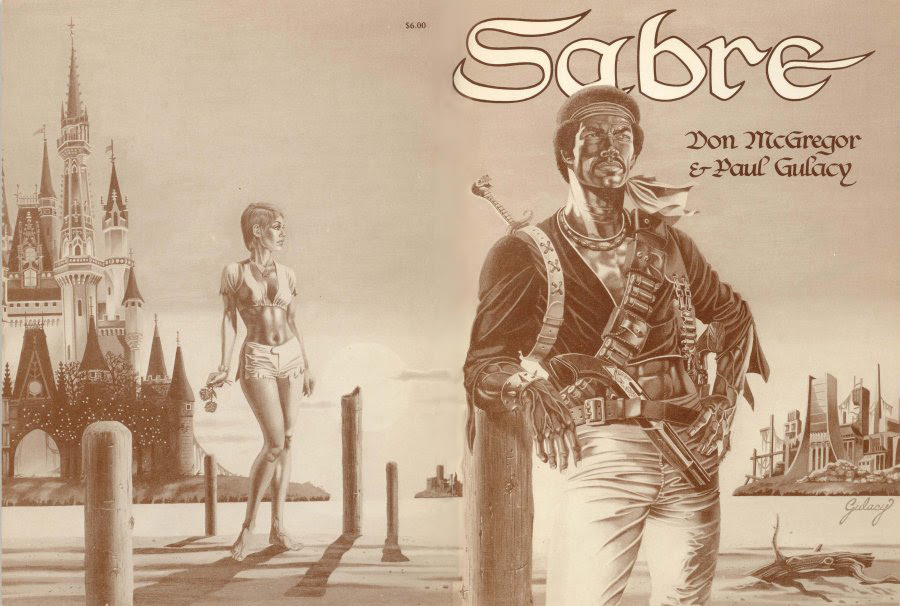
Sure!
So, what happens is I do the anthology story–it’s just a short story, but it’s the first time I work in color and I’m trying to figure out how to do digital coloring, so I approximated the original techniques that used to be used at Marvel and DC which is these twenty-five percent screen of cyan, magenta, and yellow, so you have a very limited palette of, like, sixty-four colors. I didn’t like a lot of the digital coloring I was seeing, and color printing started to be cheaper since it was being globally sourced–so, I essentially went through the history of how comics were colored in creating ‘Afrodisiac’. So, I did the short story, it was well-received, and I started getting asked to do more of those; I did more short stories, and pretty soon I started to see a bigger character arc that would make up a book. And I shopped that around. AdHouse Books was interested in it…so, ‘Street Angel’ was my black and white book, and ‘Afrodisiac’ was my color book, and after that it was off and running!
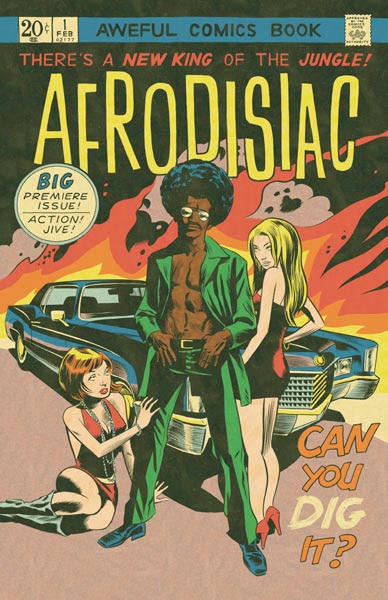
Were there any colorists who worked at Marvel or DC whose color palette/aesthetic appealed to you while you were examining vintage ’70s Bronze Age comics as part of your research for coloring ‘Afrodisiac’?
Nothing stood out specifically…part of what I was looking at was sort of the generic coloring quality of those ’70s books. There are exceptional colorists, no doubt about it, but I wasn’t chasing any of them…that wasn’t really what I was looking at at that time.
I’m trying to think, too, when do colorists even first get credit? Because, I think, with Silver Age Marvel Comics, you’ve got letters getting credit, but colorists often aren’t credited at all, right? Except maybe Jim Steranko coloring his own stories and art–and maybe Tom Palmer inking and coloring Gene Colan’s art on Doctor Strange and whatnot…then, gradually, by the early ’70s Marie Severin gets coloring credit, and Tatjana Wood gets coloring credit on Len Wein and Bernie Wrightson’s seminal Swamp Thing comics over at DC…
I’m very impressed, Sean, you are one hundred percent right! Yeah, I don’t know the year or when colorists start to get credit for that, but it is kind of weird, because at Marvel you had Stan “The Man” Lee, and Jack “King” Kirby, and “Sturdy” Steve Ditko–like they’re really playing up these creators and giving them a little bit of a spotlight–but the colorists really aren’t mentioned all that much. I don’t know when it changes and they start to get their credit, but it’s not there in the beginning–that first wave of the Marvel Universe, colorists aren’t credited.
Yeah, and it’s weird too, because in some of those early Marvel Comics Stan Lee actually takes a jab at the poor letterers in the credits boxes…like, everybody else in the Marvel Bullpen is great and cool…but you’re just the lousy letterer if you are Artie Simek or Sam Rosen or whoever…who, in all actuality, were great, talented letters…it was just Stan’s ‘Mad Men’-era attempt at humor, I guess…
(laughs)
Switching gears, how was it for you working with musician Courtney Taylor-Taylor from The Dandy Warhols on the ‘One Model Nation’ project, and did you listen to any Krautrock bands to get into the mood for it — like Can, Neu!, Amon Düül II, Popol Vuh, Kraftwerk, or even Einstürzende Neubauten?
I listen to Kraftwerk, but I don’t listen to a lot of music; so if Courtney would send me stuff or recommend things, I’d track it down and listen to it. Kraftwerk was probably the biggest musical influence that I looked into for that book. It was a really good experience! I think the previous thing I had done was ‘Plain Janes’, the young adult graphic novels from DC Comics, and so, when I was working on those, I’d have a check in every week with my editor; because the book started out late…so each week I’d send a batch of pages and I’d get notes and work that way. And I liked that. It kept me on point, it gave me a chance to check in with my collaborators and everything. So, when I got the ‘One Model Nation’ thing with Courtney Taylor-Taylor, we’d do the same thing. Because he had never done a graphic novel either–so it was like, how’s this gonna work? I’d get a script, and there was another guy, Joe Keating, who was helping adapt that script with Courtney Taylor-Taylor; so there were a lot of these parts and we were just in constant contact, and it was a really good experience…if I had a suggestion, Courtney was open to that, he was always responsive, and I liked working that way with those weekly meetings, and he was cool with all of that. So, it was a good experience, and it happened at a time when I was heading out of comics, because that was around the 2008 economic collapse time period, and things got kind of tough for me. I had quit my day job in 2007, I had two big projects, a graphic novel and a video game I was storyboarding–that both went away within two weeks of each other, that I thought were going to be a year long; I didn’t have kill fees in the contract, and things got thin, and so…after some struggles… it was like, I gotta find some other work…and I was thinking about getting into a completely different field away from the Visual Arts before I got the call from Courtney Taylor-Taylor. So that kept me around and gave me enough time and cushion to keep doing my own work. ‘Afrodisiac’ came out right after that; I got a job from Dark Horse to adapt Felicia Day’s ‘Guild’–she was doing a graphic novel based on her Web video series. And that was the third graphic novel that I had done with a first time comic book writer…which is kinda weird. The format was certainly different, but that was also a good experience, and I credit her. She’s a tremendous writer and really smart, and it seemed like she got it. But the Courtney Taylor-Taylor collaboration really kept me in comics. I might not have continued making comics if that had not come up when it did.
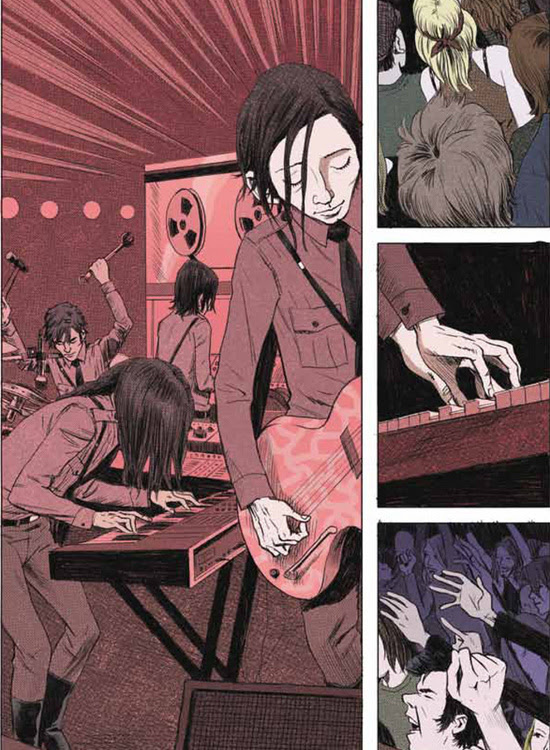
Let’s talk about your Eisner Award–how did it feel winning an Eisner Award, and give me the background on that.
It felt good…the Eisner Awards have flaws, but they’re recognized as a big comics award…so that was really great, really awesome. There’s not much you do for them, you know? I feel like in a lot of ways we should celebrate the nomination–because after that it’s a little bit of a popularity contest…you know; it’s a popular vote. So, like, if you have a book that really sells well, you have an advantage in that regard. So, I’m thrilled to have one. I’m a huge comic book fan and a nerd, so having an Eisner Award is awesome–but I don’t know that I did anything…I always try to do my best on books (laughs)…but after you’ve sent that book to the printer, it’s out of your hands. I always say: now it’s your book…”you” being the reader, the buyer, the collector, the fan. So, it’s a hard thing to process. A lot of stuff in comics has been anti-climactic–not that that was anti-climactic–but it’s different.
You know, you create a book, and in many cases it’s a year before it’s on the shelf. You may have created another book by then. You’re certainly probably working on another book. And so, it’s this weird time displacement where everybody’s like: Hey, the book’s coming out–now it’s time to talk about this book…and it’s like…my head’s completely nine months into this other book…like I don’t even remember the one you want me to talk about now. That’s kind of an odd thing. And then also, the first comic I ever made that was actually published was ‘Street Angel’…and I remember going to the comic book store the day it came out, and it was like: this is the greatest day, my dream has come true, my comic book is published…and I walked in and I looked at the new comic book rack, and there it was…and it was the most anti-climactic feeling ever. I was probably two issues past it–working on a series–and I had two issues done, and its like, in some ways, your newest work is your best work…especially when you’re young! And it was like, oh, man, there it is—but I haven’t looked at it in six months, and nobody else is looking at it (laughs)…huh, dream realized–but nothing changed in my life…I didn’t feel any different. That was a really weird feeling and I still remember it as being this really odd thing. I expected some life changing experience…but I walked in, and there it was, and then I probably looked at the new comics, and grabbed a couple of them and came home… and it was like: huh…well, back to work on issue no. 4. (laughs)
That’s really interesting–do you think in a sense it was because you, or a lot of independent comics artists are perfectionists and you’re seeing that your work has improved in “x” number of months or years since that first published work was initially drawn or created by you?
It’s kind of a different relationship with it. You know, it’s on my drawing table for months. ‘Street Angel’ had a long gestation period, because I had done the mini-comic; and then I re-did that mini-comic for the first issue; and then I had to have two issues done before they would solicit it; and then it’s like several months through the solicitation process; and so, it’s like I’m looking at work that’s over a year old…and you’re in a different place. And it’s just a strange experience. I don’t know what I expected to happen but years have gone by. But the way I think of it, because I teach a little bit, is I always try to stress to students that the “moment” is not the release day–that’s one day; books can take years to make. The thing to focus on for the year of making it is the daily sitting at your drawing table…that’s where most of my energy goes. So, by the time I see the book on the shelf, I’ve seen proofs and I’ve talked to printers and editors and it’s out of my hands. And, if I’m too worried about that book on the shelf…what if you found a mistake in there…like you’re almost better off not to look because you don’t have control anymore. You have so much control in the making of it–I love comics because it’s a blank piece of paper and I can put anything on it, draw in whatever style I want, color or black and white…it’s blank…it can be anything. The book on the shelf–it’s the complete opposite. I can’t change that at all. I can look at that and say: oh, this would have been the funniest line to have Street Angel say; oh, this would have been a better cover, or…but there’s no good in that…if you focus on that you could be a miserable person.
That’s very profound. That makes me think that –more often than not –the artist is sort of the solitary beast sitting at their drawing table, doing what they’re doing. And then you’ve got publication–and that’s a whole other thing. The people that are putting it out, and the production side of it, and all of that. Whereas, probably you actually experience more joy at the end of a really creative day where you got “x” number of pages, or even one page, that came out to your satisfaction that’s just really excellently drawn…
That’s very true! We get into this because we loved drawing when we were a kid when there were not stakes. It was like: oh, I have some free time, let me sit at the kitchen table with pens and markers and draw this cool thing! It’s just a drawing, you know? I always say, I get paid for everything else except sitting at the drawing table–I’ll do that for free! I would pay you if I had the money to buy more time at the drawing table. It’s a joy! If I won the lottery, I’d continue to draw. That’s one of my favorite things that I do in life. Like it’s a genuine happy place. Sometimes it’s frustrating or a drawing is hard to do–but that’s the best part. And then everything else you kind of have to do to afford to sit at that table. Promoting the books and making corrections, and pitching things. Like all of that is what enables you to sit at that drawing table and have that great feeling of actually drawing. It’s very meditative.
Yeah. Well, I think this is a good segue way for my next question–which is how did you and Ed Piskor and Tom Scioli all meet and become friends? And then how did you decide to make your YouTube channel, ‘Cartoonist Kayfabe’, a thing?
Those are good questions–and they’re one and the same. We are all based in Pittsburgh, which is a pretty small city; and we all wanted to make comics and didn’t really know how. We’re self-taught to a large degree. And because it’s a small city, we would hear about each other. You know, if you went to the comic book store there would be a little shelf of local creators and it would have photocopied mini-comics from Tom Scioli or Ed Piskor…and so, we would see each other’s work that way. And there was a friend of mine, Jason, who I had gone to college with who was also into making comics; so for the first couple of years we were both making comics and we would meet once a week…at a comic book store on new comic book day and we’d bring whatever we had done that week. It was like positive peer pressure. You didn’t want to show up with no new pages. Then we would travel to comics shows together…to SPX, or HeroesCon, or MOCCA…wherever we’d go. And so, the comic book store [in Pittsburgh], they were great, they knew us, and so they would tell Ed Piskor: oh, yeah, Jimm Rugg comes here on Wednesdays…or Tom Scioli… and we’d start meeting there every week–and it was really cool. We would do that for, like, two years, where we would just meet and look at each other’s comics and talk about what we were doing next. And it was this very positive thing because we all had the same goal of making our comics. And so we became friends. We would travel to shows together, and we would do one every year in Charlotte–and after about eight hours in the car together both ways, and a weekend together, we became good friends. And then Cartoonist Kayfabe grew out of that. We would often remark upon how this should be a podcast or we should record this…and so, then we started to do that.
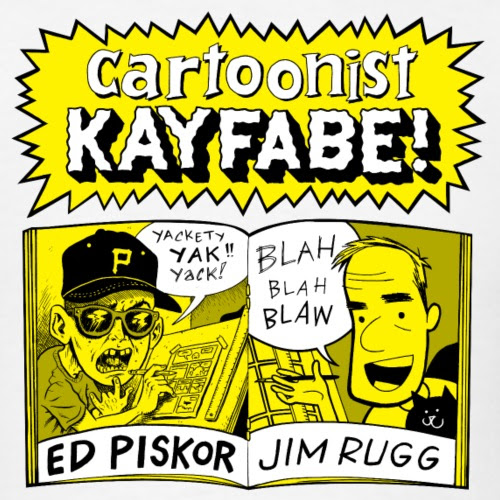
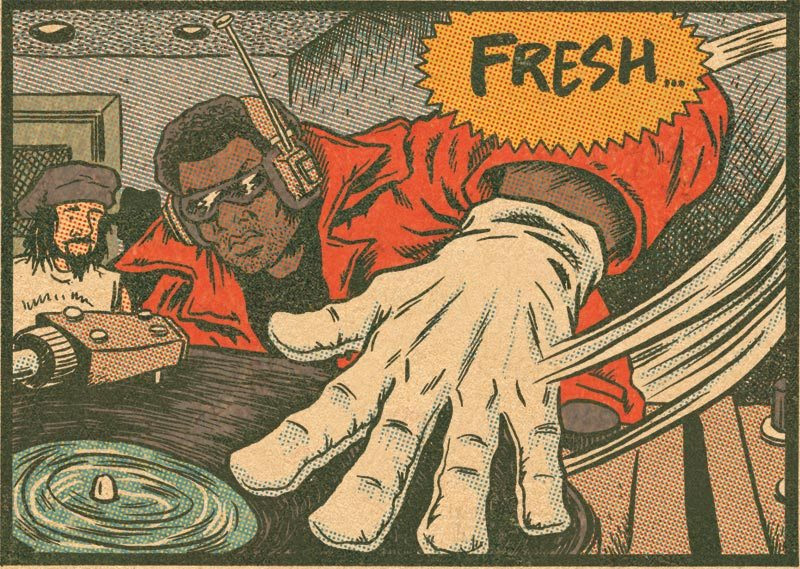
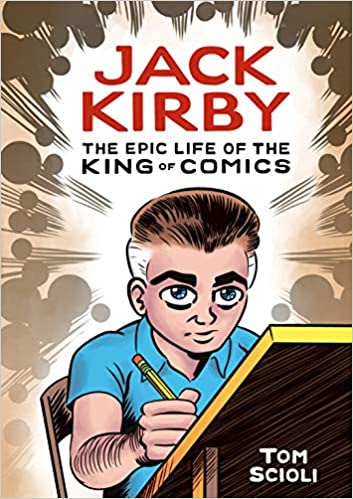
I have to say–and I know a lot of other people have said this, too, in terms of reading the ‘Cartoonist Kayfabe’ comments and everything–but, especially with all of the downtime during this pandemic…I look at a lot of different people’s podcasts and YouTube channels, and there’s some other people who I enjoy what they have to say about the comics medium…but you guys, because you are actual living, breathing comic book artists and writers and independent thinkers and creators. I just really get into it when you guys are looking at stuff like the classic EC Comics work, and you’re going into minute detail and analyzing the art of Johnny Craig, or Al Williamson, or Harvey Kurtzman or whoever it is. Like that is the best thing because you guys are literally educating young (and older) people that might want to come up in the industry, and you’re talking about things that are important because it’s not just about something that’s contemporary in terms of the social mores of right now, or the politics of right now, or this, that, and the other…but these are like mini seminars about craft and offer examinations of technical tools for creating visually great stories and showing how these master draftsmen and draftswomen–some from as long ago as the Golden Age or Atomic Age of comics–plied their trade. So for me, personally, it’s inspiring and a beautiful thing to watch your podcasts and learn more about Benday Dots or Craftint duotone paper and how Wally Wood or whoever used them to great effect.
I’m glad to hear that, and there’s a big part of me that is the same–like I’m a mark. Ed sees stuff in comics that’s different than what I see…Tom sees stuff differently…so, the benefit you’re describing–I get some of that benefit, too. And that’s what we would do in these car rides…we would just talk about whatever comics we were reading or some artist thing that we had noticed or been thinking about…and, it’s amazing…whenever I say it’s like my Grad School, it really is! The content that I make–I’m the first consumer of that content…I’m interested in this…I wanna hear what Ed has to say. And if I find some comic that he hasn’t read, it’s like: Ed, let’s read this comic and talk about it next week. I’m genuinely excited to see what he will see in this stuff. So, everything you say about ‘Cartoonist Kayfabe’–I get that too! Ed and Tom are some of my favorite people to talk comics with, so, I’m glad that comes through!
Yeah–definitely. And when you have knowledgeable collectors on your podcast with amazing collections like Warren Bernard, and he can show us artifacts like obscure art prints and posters from the World War I era, or Pulp magazines and comic strips from the 1920s or 1930s, and speak about everything that was going on geo-politically at the time…or talk about how Joe Simon & Jack Kirby were influenced by the Warner Brothers’ Dead End Kids movies and used that to create the Newsboy Legion stories in the 1940s…putting that stuff in a context of the American Popular Culture of the time or of what was happening in the rest of the world during World War II, is always fascinating as well!
Yeah, I love those guys! Warren Bernard is a guy that I’ve been friends with for ten years. So, it’s like, when he comes on the podcast, it’s like: yeah, Warren, school me a little bit (laughs)…and we get really good feedback whenever we have Warren on! Depending on what we’re doing, I think it appeals to different viewers or listeners. I think that’s good, too. I used to say, I don’t want to make any comic that everybody likes–and I don’t want any fan to like everything I do. Because it suggests, in my mind, that I’m not trying new things and taking new chances. And ‘Cartoonist Kayfabe’ is an extension of that.
Yeah, also, I have to say that your Stephen Bissette, Tim Truman, Rick Veitch, Howard Chaykin, Jaime Hernandez, Ann Nocenti, and Chris Claremont, and other interviews with iconic creators from the ’80s have been outstanding — and the episode you did with the mind blowing unpublished fan fic. Tim Vigil Batman comic art–wow! Joker and Harley as we’ve never seen them…! (laughs) I keep wondering when that will get taken down!
(Laughs) Yeah, we haven’t gotten in any trouble over that!
Not yet! (laughs) But, yeah, that was amazing–thanks for putting that out there for comics aficionados to check out! Tim Vigil’s art is so great–DC really should pay him to draw a Batman graphic novel…just one not quite as graphic as those Joker/Harley pages (laughs)…
Let’s move on into the Octobriana questions that I have. Beyond the fact that Octobriana is a public domain character which anybody can freely use, what drew you (no pun intended) to the character in the first place? Did you like her aesthetic design…costume…face…or the ideology behind her creation?
It started out with blacklight…I had done a blacklight screen print, gosh, probably ten years ago. And I learned a lot about the blacklight process and how the use of florescent inks is what makes something blacklight. And I loved that kind of art…you, know, my ‘Afrodisiac’ comic was set in the ’70s, I was born in the ’70s, a lot of the media that I gravitated to was stuff created in the ’70s — so, it was just an aesthetic appeal about the blacklight look, and I had been thinking about whether you could print an offset comic book using that. And I have a book that’s a collection of blacklight posters, and it’s printed that way as far as I can tell. And AdHouse books who I’ve done a ton of stuff with–including ‘Afrodisiac’–so, I talked to him, and was like: Chris, do you think this will work? And he thought it would…so then it was like: what will we do? I need a subject that fits the concept of what I want to print. And I kind of sat on it for awhile until Octobriana crossed my path. And I had that original Octobriana book–the publication from years ago…and I looked through it again…and it was kinda perfect…because she shows up in the ’70s — so the time period is right…and then she’s this Underground, Russian, counter-culture superhero…and I’m thinking about it…and it’s the same time period as the American Underground comix…which, like, the blacklight posters, headshops, those all swirl together in my mind…and, it’s like, this is perfect. What if the American Underground cartoonists had gotten a hold of Octobriana and in an act of solidarity with these resistance artists, they would do an Octobriana comic? And for American Underground comix, blacklight makes perfect sense! I love the design of Octobriana, I love the public domain, I love the kayfabe of the book that introduced her to the world. It was just all of these things that, once I started thinking about it…it was a perfect fit. It checked every box off. It was like Cinderella’s slipper.
Is that great page you drew of Octobriana with what looks like a Coca-Cola emblem behind her a tribute to Spain Rodriguez’s panel from ‘Trashman’?
Yeah–the Spain Rodriguez one is really cool because they did a newsprint edition of ‘Trashman’ pretty early on, and it’s all black and white except for that one panel has the read–and, you know, it’s like page seven, and it’s just that one little panel, which is really great. It’s a little bit of a shout out to that, but it’s more that part of Octobriana’s character, as defined in that original appearance text is that she likes Coca-Cola — which is very American, and very counter to the Soviet Union which she is revolting against. So, the Coca-Cola is part of that original mythos around Octobriana–and then, yeah, there’s definitely a nod to Trashman with the Coca-Cola…there’s just a lot there…there’s so much rich iconography to put together there (laughs).
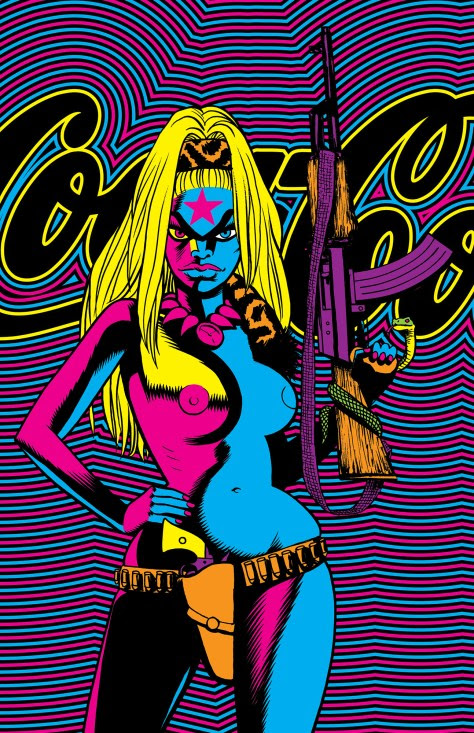
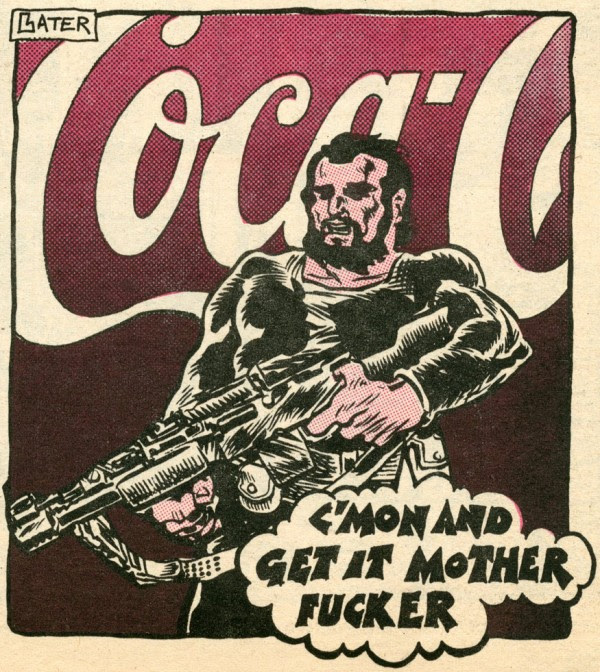
I’m glad I asked that question then because it gives me a little more understanding. Through free association It also makes me think of the song Koka Kola by The Clash from the ‘London Calling’ album, which, funnily enough, has lyrics that mention a snake skin suit…and Octobriana wears snake skin pants as part of her costume… (laughs)
Can you talk a bit about the Soviet-era origin of Octobriana and also the so-called Octobriana hoax?
Yeah, absolutely. So, the concept is that Underground college students in the Soviet Union weren’t happy with the Soviet Union–this would have been in the Sixties–so, they would get together and create, like, Beat, Underground publications. And any publication in the Soviet Union had to go through the State–the State owned everything. So, these were illegal publications. So, it’s easiest to think about them like ‘zines–these Underground artists, and intellectuals, and quiet revolutionaries were putting out these publications where they would translate English poetry in them–you know, it was just about freedom, and opposition to the ideals of the Soviet Union was what they were all about.
So this is what was called–in Russian–“samizdat”?
That’s right. And what they were were private publications which were outlawed. They were illegal no matter what the contents were. If you didn’t do it through the State process, it was illegal. And their subject matter would have never gotten approved through the State–so, they were dangerous, these publications.
And there were probably real Russian and Eastern European dissidents and intellectuals like Aleksandr Solzhenitsyn who were publishing through ‘samizdat‘, I would imagine…?
Sort of! (laughs) I can’t verify anything that I’ve said, and I know that a lot of what I’m going to tell you is definitely not true [hence, the “Octobriana hoax”]. There may be no kernel of truth — this is just in the context of what the original Octobriana book presented. According to the book, there was a dissident student group called the P.P.P. –“Progressive Political Pornography Party,” and that was this anonymous group that would make this stuff–and one of the things they made was this superhero–which was like subverting an American iconography and creating this mythic Soviet/Russian character that had this backstory that went for thousands of years, and there were all of these elements that were kind of a mashup of their ideals…and they would publish these comics as a group…everybody would work together on them. They would publish them and have a little party where everybody could read them, but they had to leave them there so they could be removed– like, if you got caught with it, you’re gonna be tortured to give up the names of everyone involved.
So, in other words, we don’t know for sure if any actual Underground Octobriana illegal ‘samizdat’ comics were really published by the so-called P.P.P. in the Soviet Union during the Sixties/Seventies, correct?
I…don’t think there were…
So, it’s a tall tale…? Not discounting the fact that real Russian intellectual dissidents did publish illegal works and sometimes were sent to the Gulag…
Well, what was published was a book. In 1971 Petr Sadecký writes a book called ‘Octobriana and the Russian Underground’, and it’s all about what I just described to you. It’s mostly text, and it’s a big hardcover book–almost 200 pages–detailing the P.P.P. group and then this character that they would make these comics about. And there’s artwork in it of her comics and adventures. It’s a fantastic book, it’s one of the weirder comic objects in history because it was published as if it was non-fiction. It was published by Tom Stacey, who is a publisher out of the U.K. He did a lot of global political and historical publications of a non-fiction nature. This was during the Cold War, and he was definitely a right-wing conservative-type publisher. And so, ‘Octobriana and the Russian Underground’ fits the propaganda that he was publishing. I have not be able to determine whether Stacey knew Octobriana was a hoax or not.
Oh, Stacey might have got played by Petr Sadecký, basically…?
He might have…and I tried reaching out to him. As far as I know, he’s still alive, but he’s in his nineties…so, I have no idea if he actually is still alive and what state he’s in…but this book was published and it made the front page of ‘The Daily Telegraph’ or whatever London’s big newspaper is. This book was published with fanfare. It goes on to be debunked–but it takes a decade or something for people to really debunk it. There was an Underground artist in San Francisco, Trina Robbins, a very well known and important cartoonist and comics historian…
Yeah, I’m familiar with her and her work…
She would interact with artists and animators and cartoonists around the world, and at some international festival she got in contact with some–I want to say Russian–cartoonists or animators and was asking them about Octobriana, and they’re like: naw, never heard of that…that’s not a thing. And slowly people began to realize that this was a hoax. There were just details that didn’t add up. Petr Sadecký is a very colorful character. He defected from [at that time] Czechoslovakia, and it turns out that the artwork that’s in ‘Octobriana and the Russian Underground’ was stolen by him from two well-known Czechoslovakian illustrators and they sued him in a West German court to get their artwork back…and they suffered, because he [Sadecký] shows up [in the West] and publishes their artwork and it’s anti-Soviet Union artwork while they are living behind the Iron Curtain…and it kind of ruined them.
Yeah, I read that the Czech artists–Bohumil Konečný and Zdeněk Burian–were under the impression they were creating artwork for a Soviet-endorsed propaganda comic book character to be called “Amazona” and didn’t know that Sadecký would defect to the West and flip the script…putting them at risk.
Yes, that’s right.
What do you think of Bohumil Konečný and Zdeněk Burian’s original “Amazona”/repurposed Octobriana art–from an aesthetic, propaganda, or just plain visual storytelling perspective?
That’s an interesting question. I never even considered it from a critical standpoint–but I’m a fan of it. It’s graphic–it birthed this character that I adore. So, what I’ve seen of the art works really well for me…yeah, I guess I’m a fan of it.
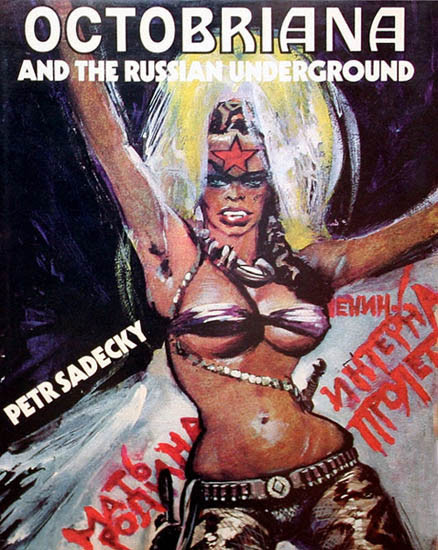
Interestingly, I read that Zdeněk Burian was a famous painter, book illustrator, and palaeoartist whose work was crucial to palaeontological reconstruction and also used as a reference for many dinosaur movies–including the Jurassic Park franchise. Both Richard Corben and Frank Frazetta allegedly checked Burian’s art out.
He was a very popular artist–and the dinosaur work is a big part of what he’s known for, so that’s certainly a possibility.
It is kind of cool that Octobriana was drawn flying around on a pteranodon–no doubt that was Zdeněk Burian’s idea…(laughs)
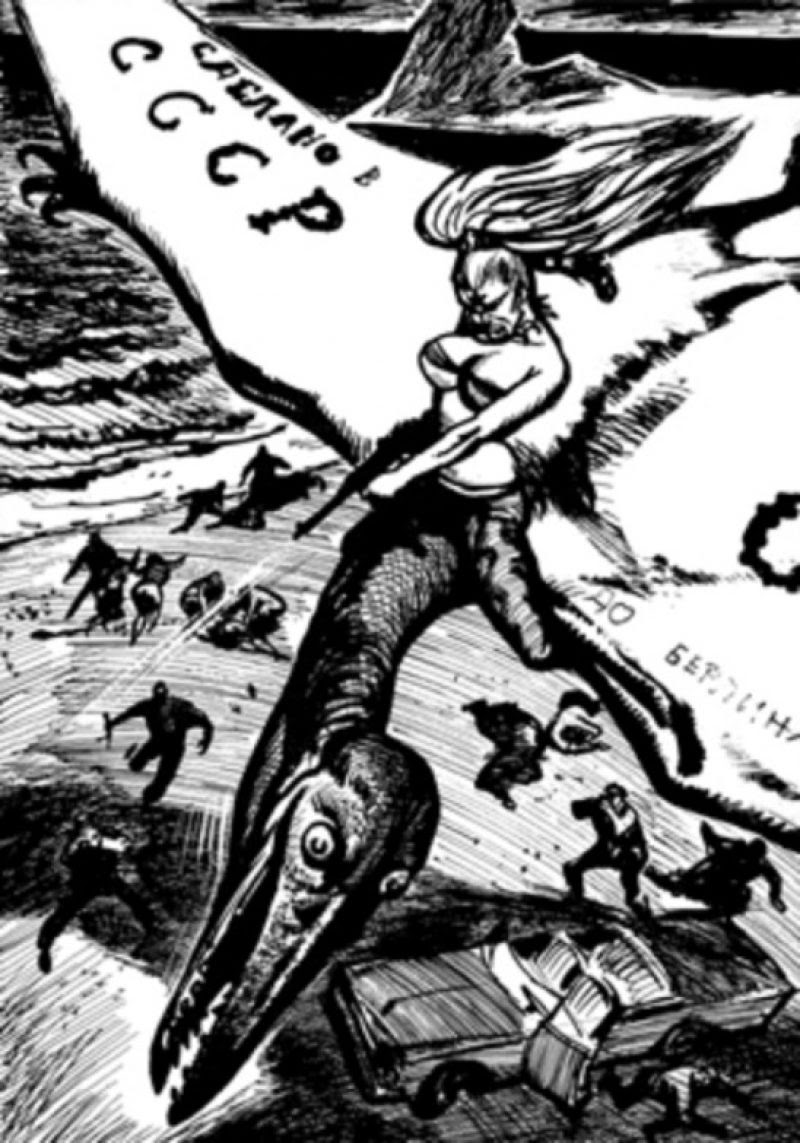
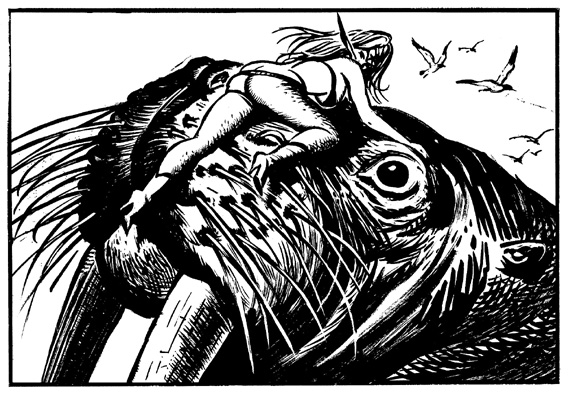
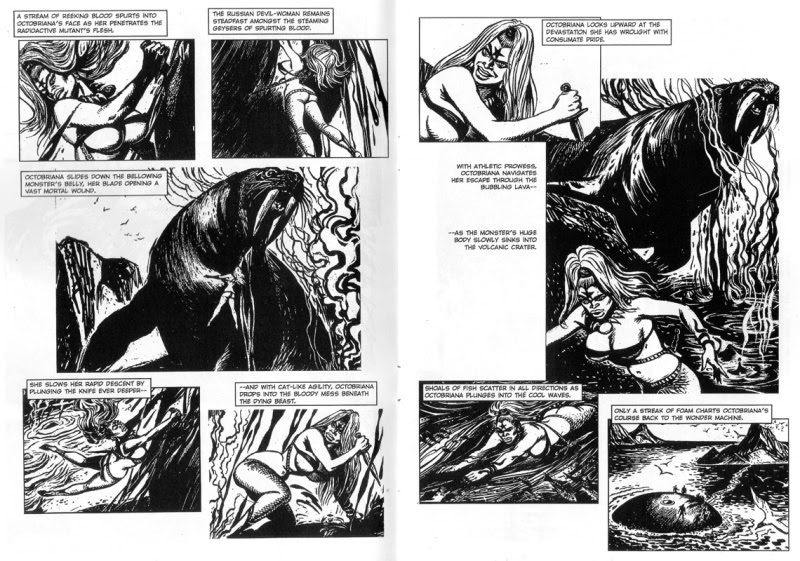
This is kind of a trivial question, but it seems to me if you look at the original Octobriana/Amazona art, the artists were going for a kind of Brigitte Bardot sensual pouting face–but more exaggerated and over the top with a hyper-voluptuous body. Do you have any thoughts on that or have you read anything along those lines? I know Jean-Claude Forest’s Barbarella was also being published by then in France…and could also be interpreted as utilizing Bardot as a source of erotic inspiration…
I don’t know…I think I have seen that comparison but it’s not something I think about too much because the nature of comics is that characters–especially superheroes–are often interpreted by different artists, and so they vary. I have a theory that that’s what gives superhero comics a certain literary life. Because most characters are based on arcs, and development, and growth, and changing–but not in superhero comics. So, the life comes from different artists interpreting these characters and sort of makes them feel more three-dimensional… there’s a quality which that brings to them. And so, because a couple of artists [Bohumil Konečný and Zdeněk Burian] drew Octobriana in that original book, I don’t think it has a definitive of, you know, this is how she looks…I mean, there are qualities: she has a star on her forehead; she has big hair; she has snakeskin pants…so, there are qualities about her that are consistent the same way Spider-Man would have qualities that are consistent–like white eyes, or costume details that are consistent –but the interpretation can vary quite a bit.
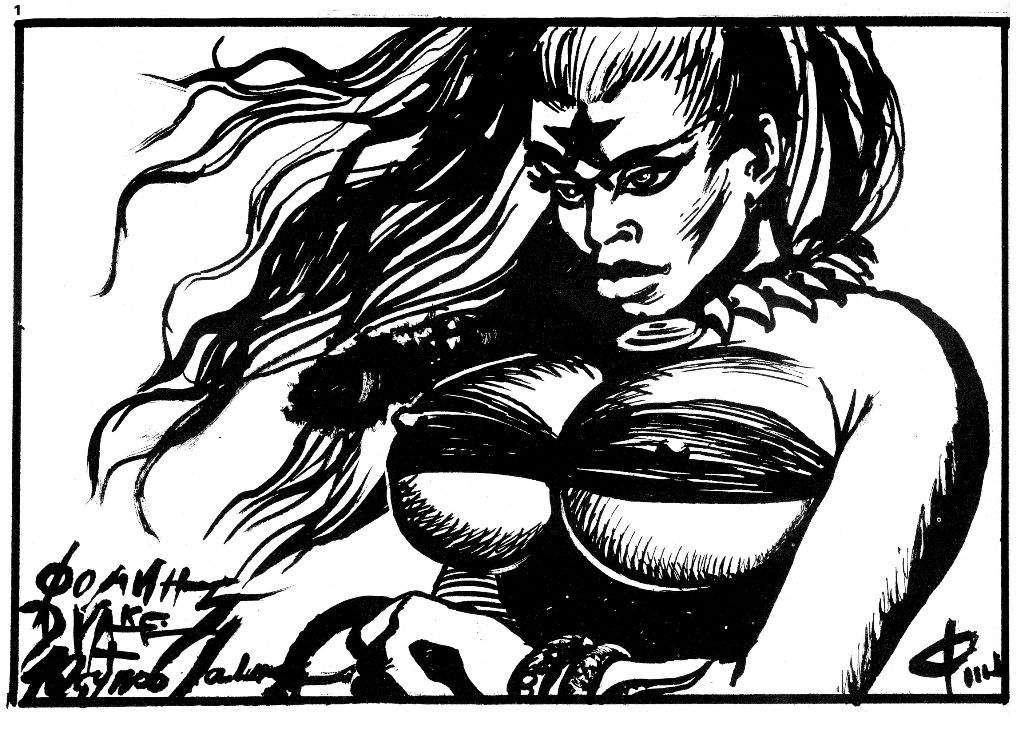
Yeah, I get that. I guess I’m always just fascinated by where artists take their inspiration from and the intersection with real personalities…like you always hear that the original, Golden Age Captain Marvel’s face was based on the Hollywood actor Fred MacMurray’s face, circa 1940. But going back to Trina Robbins and the San Francisco Underground artists, as far as you know, none of them ever used Octobriana in any of their stories since she was public domain? It seems like Trina could have had Octobriana leading a Women’s Liberation Army to smash the decadent patriarchy or something in one of her comix (laughs)…or the Underground artist Spain could have done a great story with his character Trashman vs. Octobriana…
(laughs) Or the two of them tag-teaming up together to topple somebody! Yeah, they would have been a great pair! Spain Rodriguez drawing Octobriana would have been an artistic match made in heaven.
Well, that was going to be one of my other questions–and I guess I’ll ask it now…I get it that as a creator, you wanna do your own thing, but I’m always thinking about these scenarios, like, what if Trashman was licensed through Spain’s widow–or an analogue character was created: “Sanitation Engineer”, or whatever, would appear with Octobriana in a new story…or what if we had Cold War intrigue with Wally Wood’s Cannon vs. Octobriana in a story set in the late ’60s/early ’70s…and bring in Madame Toy…you know what I mean?
Oh, Cannon would be another great one to pair up with Octobriana!
Like, think about it…you and Ed and Tom could all get together and do a jam session mega-comic where you are all drawing different characters in one story…you on Octobriana, Ed on Trashman or Cannon, and Tom could do Simon & Kirby’s Fighting American or something… (laughs)…sorry, I’m just going over the top with my imagination…
I’ll tell you this–if somebody does that, I will be happy to buy a copy!
(laughs)
I’d love to see that — I don’t know that it would be me…it comes down to that whole thing of just the licensing…and, you know, comics takes so long to make that I want to control what I make as much as possible…
Right.
There are exceptions, you know…I’ve done work for hire–I’m actually currently doing some work for hire–but for the most part I want to control as much of what I do as possible.
Yeah, that makes sense…
When you start to get tangled up with other people, they own parts of it, and I don’t want to do that. That’s tough…you know. Artists are temperamental, and if somebody decides they’ve changed their mind about something, you could spend years of your life on stuff. I have friends who have literally spent years of their life on collaborative projects that the other person kind of shut down–and that’s it!
Well, like the classic story–and you and Ed did a ‘Cartoonist Kayfabe’ episode about it recently–where Alan Moore left Steve Bissette and Rick Veitch and the other guys high and dry on completing the 1963 project — maybe his reasons were valid, but people were disappointed…
And to be fair, Alan Moore gave them the characters and they divvied those characters up; so I guess the ones Bissette had a greater hand in are his, and Rick Veitch has his…but you never get completion of the project…and, he gave them the characters, but they can’t reprint the work…so, that’s exactly an example. Think of those guys–they are three very copyright-sensitive, creator-owned-sensitive pioneers, and yet, they’re in that jam of like, well, those are some really great comics that don’t get reprinted and that they don’t get to exploit financially…it’s a bummer.
Yeah…well, let me ask you a few more Octobriana questions that I had lined up. So, first of all, before you did your project, besides looking at the coffee table book or whatnot that came out in 1971, were you interested enough to read any of the other stuff people have done with her as a public domain character over the last fifty years? Like, I read that she shows up in ‘Cherry’s Jubilee’ no. 2, by Larry Welz, the Cherry Poptart creator.
I have read that one, yeah…(laughs)
Is that one worth reading…? (laughs) I haven’t read any of these–I’m just curious. Apparently she’s in an issue of the UK publication ‘2000 AD’, and, I don’t know if it ever got off the ground or not, but Steve Orlando and Chas Truog had a Kickstarter going for an Octobriana project.
Yeah, those float around. I pick up and read as much of those things as I can. It’s really cool to see her interpreted by other creators–especially now that I’ve thrown my hat in the ring. I think the first use of her [beyond the ‘Octobriana and the Russian Underground’ book] was by Bryan Talbot in his Luthor Arkwright comic. I have a second or third edition of that, so the one that I have, Trina Robbins writes in it about the character and the history of the character and what she knows. So, a lot of the comics that feature Octobriana also have some information about her history, and it’s really fun. I like all that stuff, because some of them, I don’t know if the creators know what they know and if they’re right (laughs)… sometimes they write in what we would refer to as “kayfabe” where it’s like two things…the myths of her are lies…you know? Bryan Talbot’s English–I believe–and, so, he would have been exposed to the character from the cover of this London newspaper, and then picked up the book ’cause it’s exciting and a comic book Russian superhero…and then realizing what she is, and it’s public domain, and working her into his big epic story–that stuff’s awesome to me! That’s not different than Marvel/DC Universes, except that we can all play with it and add to her story.
Yeah, and that’s the beauty of it–that she is in the public domain.
If you want to get a book on her and her history, there’s one by John A. Short, and he’s somebody that crossed my path during the Kickstarter…he’s done some comics with her, but he’s also done a book called ‘Octobriana: The Underground History’, and that’s a really great book because it indexes where she’s appeared, and pretty thorough summaries and histories of the character, the creators, and it’s just a great resource.
Do you know if a shoot script is mentioned in that book for the film project that David Bowie wanted to produce back in the ’70s with Amanda Lear starring as Octobriana?
I have not come across a script. There are stories of him wanting to do that project, but I don’t know about a script or how far it got. There are short films with Octobriana out there…I think some have come out of Scandinavia…
Yeah, I think I read it was from Finland…
Yeah.
So, I wanted to ask this, too, because I think I detected at least two–possibly three tribute/homage panels that you drew in your Octobriana comic.
So, first you have a panel, or montage page, where she’s socking Robot Stalin…I’m assuming that’s an homage to Simon & Kirby’s classic cover to Captain America no. 1 from 1941 where Cap is punching Hitler…?
Completely unintentional—but I will take that. If I had thought of it, it would have been a spot-on homage…and I’m mad I didn’t think of it…but hopefully on some level…you know, that’s an iconic cover…
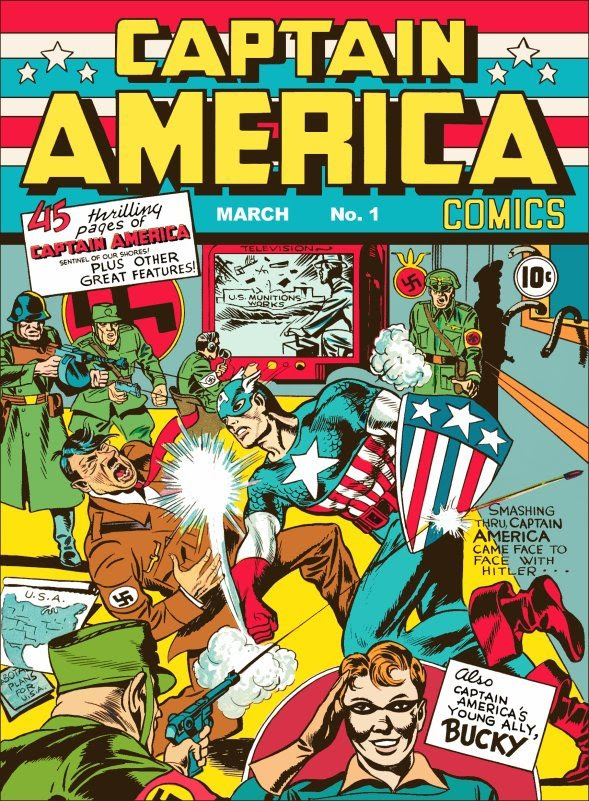
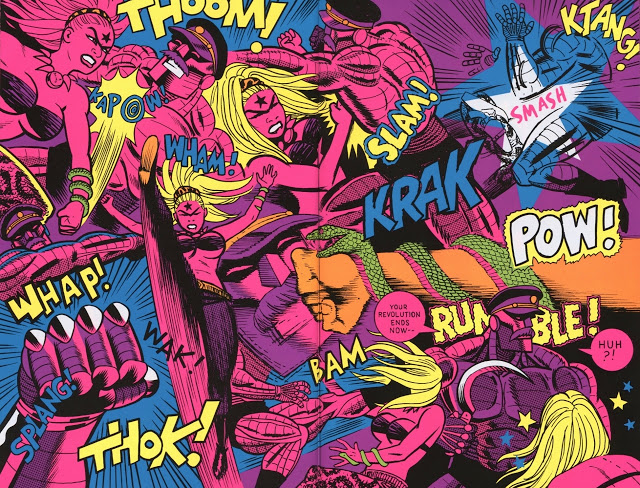
Yeah, I think your drawing is reversed–Octobriana’s punching Robot Stalin from the other direction than from where Cap is punching Hitler…
And then, there’s another panel where Octobriana is on her motorcycle that looks to me like something out of either ‘Pravda’, or ‘The Adventures of Jodelle’ by the late great Belgian Pop artist extraordinaire Guy Peellaert.
You have a good eye! That is out of ‘Pravda’! Yeah, I’m a fan of that. I actually got a copy of ‘Pravda’ when I was in Copenhagen in a comic shop just digging through stacks of dusty books. And I love Guy Peellaert’s art. So, yeah, that was something I put in there. Good pull, Sean.
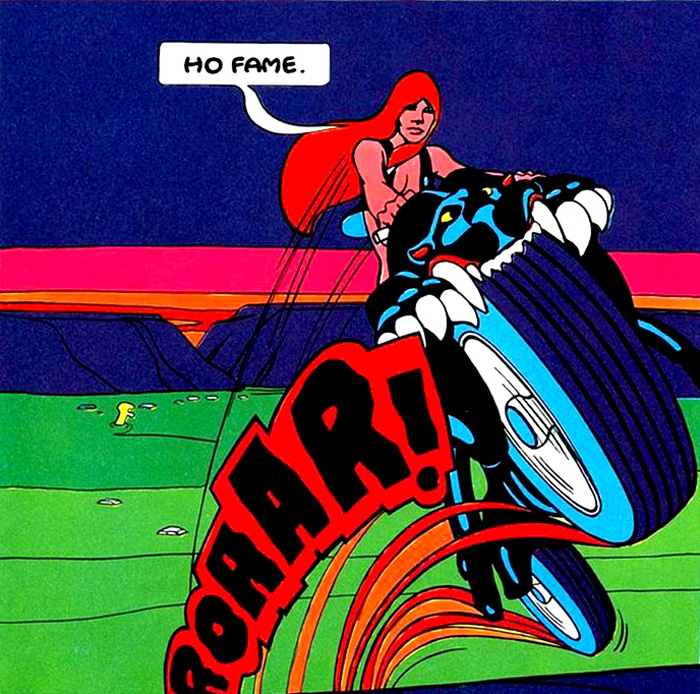
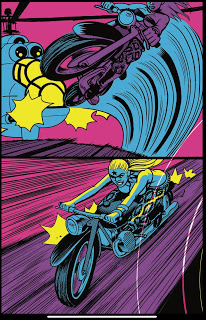
And then there’s another one–this might be a reach, but there’s a panel where she’s kicking with her leg up, and, I’m like, that reminds me of a panel by Nick Cardy from a Silver Age Teen Titans comic where Donna Troy/Wonder Girl is dressed up as a hippie chick and kicking some biker. I think it’s from a Bob Haney story called “Captain Rumble Blasts the Scene”
That one I’m gonna call a swing and a miss.
Okay. (laughs)
It’s possible it’s something that I’ve seen somewhere and subconsciously cataloged it and put it in–but these things happen. I did an Afrodisiac panel where Afrodisiac punches Dracula through the skull and his brain flops out the back…
(laughs)
And I got an e-mail from a cartoonist who I adore, and they’re like: nice panel! And I’m like: thanks! And then he sent me his panel of it, which had been published and I had read absolutely before I did mine…and I was like: Oh my God…I was so embarrassed, because I didn’t even realize–and I love this guy’s comics and had read the comic in question…so, we laughed about it and stuff. It happens a lot. I had a cartoonist who I hold in the highest regard apologize to me one time because his book was coming out and there was a panel that looked like something I had drawn on a book…and he was like: I’m sorry, I’m not lifting from you. So that can happen. I mean, there’s a lot of comics with drawings of somebody kicking somebody in the face!
Yeah, it’s kind of like music…there’s only so many chord progressions…you’re gonna have repetition, so, it wasn’t like a Dan Adkins thing, basically [note: Dan Adkins was a talented comic book artist who had learned from the great Wally Wood. But Adkins ended up taking a lot of heat in the comics fan press in the early ’70s for doing many “swipe” panels–essentially copying the art of other comic artists. Although, many, many comic artists “swiped” to one degree or another, going at least as far back as the Golden Age of comics during the 1930s and ’40s with artists swiping panels and poses from Hal Foster’s ‘Prince Valiant’ or Alex Raymond’s ‘Flash Gordon’ Sunday Newspaper comic strips from that time period; by the early ’70s, with comics emerging from disposable junk culture into quasi-respectability as an art form–the idea of swiping was seriously frowned upon; and Dan Adkins ultimately stopped penciling and worked primarily as an inker due to the criticisms levied against him].
(laughs)
Not that I’m against Dan Adkins– I like his work and think he was a good artist on the whole…but, definitely, he was know to swipe quite a bit.
Well, Rich Buckler was another one known for that…and I’m kind of surprised that somebody doesn’t have a whole career of just doing that. I mean there’s like Kirby, and Byrne, and Miller, and all these things that we all love. There’s so much nostalgia at Marvel and DC, I’m surprised there’s not more of it. But Rob Liefeld quite famously swiped some very iconic images, and, like I said, Rich Buckler. His morgue file, I think, was just old comics.
Yeah, it is interesting, because if you look back, especially once Buckler started doing a lot of covers for DC Comics in the late ’70s, I’m thinking he’s doing bits on–or drawing inspiration from–Neal Adams and Gil Kane; but again, those are some really good covers with dynamic poses. And I still like his work!
I do, too –but it’s funny, because you look at, like, Deathlok, which is credited as created by Rich Buckler, and it’s the basically the bad guy character from Gil Kane’s ‘His Name is Savage’. They are exactly the same.
Oh, that’s true.
And Buckler did a run on Fantastic Four, and it was heavily like Jack Kirby’s stuff — and that makes sense. Everybody thinks the Jack Kirby Fantastic Four run is this magical great thing that’s very foundational.
I think–if you and Ed were ever so inclined–it could be interesting to do a Rich Buckler episode of Cartoonist Kayfabe –or a Red Circle Comics episode where you guys look at some of the Red Circle stuff that came out in the ’80s when Buckler was the managing editor and chief artist there–because he brought on board Steranko for two covers for first two issues of The Fly; James Sherman did some great art…and then Steve Ditko does a pretty interesting run on the Fly for about seven or eight issues…where, of course, he takes The Fly in the direction of being an Ayn Randian Objectivist superhero…
Is Red Circle the same company that published ‘The Black Hood’?
Yes! Basically it was Archie Comics’ short-lived imprint to revive their Golden Age (MLJ Comics) and Silver Age (Mighty Comics) superhero characters like The Black Hood, The Shield, Steel Sterling, The Comet, The Web, Mr. Justice, The Jaguar, The Fly and Fly-Girl…and others…
‘Black Hood’ had back up stories by Alex Toth doing The Fox…?
Yes! Those, in particular, you guys should check out–those are wonderful! And even some of the lead Black Hood stories had Gray Morrow art–which isn’t too shabby either.
Yeah, I have some of those comics–I do dig that stuff.
Back to Octobriana –when you were doing background research or to get in the mode to do you Octobriana comic, did you end up watching any Andei Tarkovsky films or other other Eastern European Soviet era Cold War films from the ’60s or ’70s?
No, I didn’t–that would make sense. I did look at Soviet Constructivist design posters and things of that nature, but I didn’t watch any films for it.
Do you have any other upcoming projects you’d like to do in blacklight or did the Octobriana comic fulfill that need? Or in general, what are upcoming projects you are working on?
I’ve already done one more blacklight project since that — it’s a Teenage Mutant Ninja Turtles screen print. Which is awesome, because as somebody who values creator ownership, and making my own characters, the Turtles were a big inspiration. It’s interesting that they’ve now been sold, but that’s like for comics and doing your own characters, the Turtles are like the Mount Rushmore. And so, I did a Turtles blacklight poster which was really fun, because you’ve got to use green–which is a great blacklight color.
The project I’m working on now, I will maybe try to do a little blacklight with it, but it hasn’t been announced publicly yet, and so I can’t really talk about it. But I would love to do more blacklight–even in just regular light, they kind of tickle my eyeballs, so, I’d love to do more blacklight.
Okay–cool. Is there anything that you want to say that I didn’t ask but maybe should have asked, or any more information that you want to impart about any of your work that I jumped over?
You know, I wish I had something really smart to say here, but… I don’t. (laughs)
(laughs)
It was a great interview from my standpoint. I really liked your questions–man, you came prepared! You might be one of the most knowledgeable people I’ve talked to, especially going down some of these rabbit holes–like, well done, Sean. But, yeah, I don’t have too much right now. I can’t wait until my next book is announced so that I can talk about it and promote it; and if it’s appealing to you, maybe we’ll talk a little more then.
Okay! Oh, we didn’t talk about ‘The Plain Janes’, right?
Yeah! It’s worth saying some stuff about them, because that was my last book before Octobriana, and then before that was ‘Street Angel Deadliest Girl Alive’–you know, I had done ‘Street Angel’ as my first book ever, then done a bunch of other stuff, then returned to ‘Street Angel’ at Image Comics in 2017. And that’s all new ‘Street Angel’ that’s collected in ‘Deadliest Girl Alive’, and I am a much better cartoonist than I was when I started. It’s full color, was very fun to; she’s a homeless ninja on a skateboard, she’s an orphan; so, people who love Harry Potter should buy it–that would really make me and my wife happy…
(laughs)
…but it’s action superhero stuff…lighthearted, but not without some edge. She’s a sad character, as you might imagine, as a homeless orphan–but she’s also super awesome as a ninja skateboarder. And so, I’m very proud of that book; I think it’s some of my best drawing and cartooning, and everything.
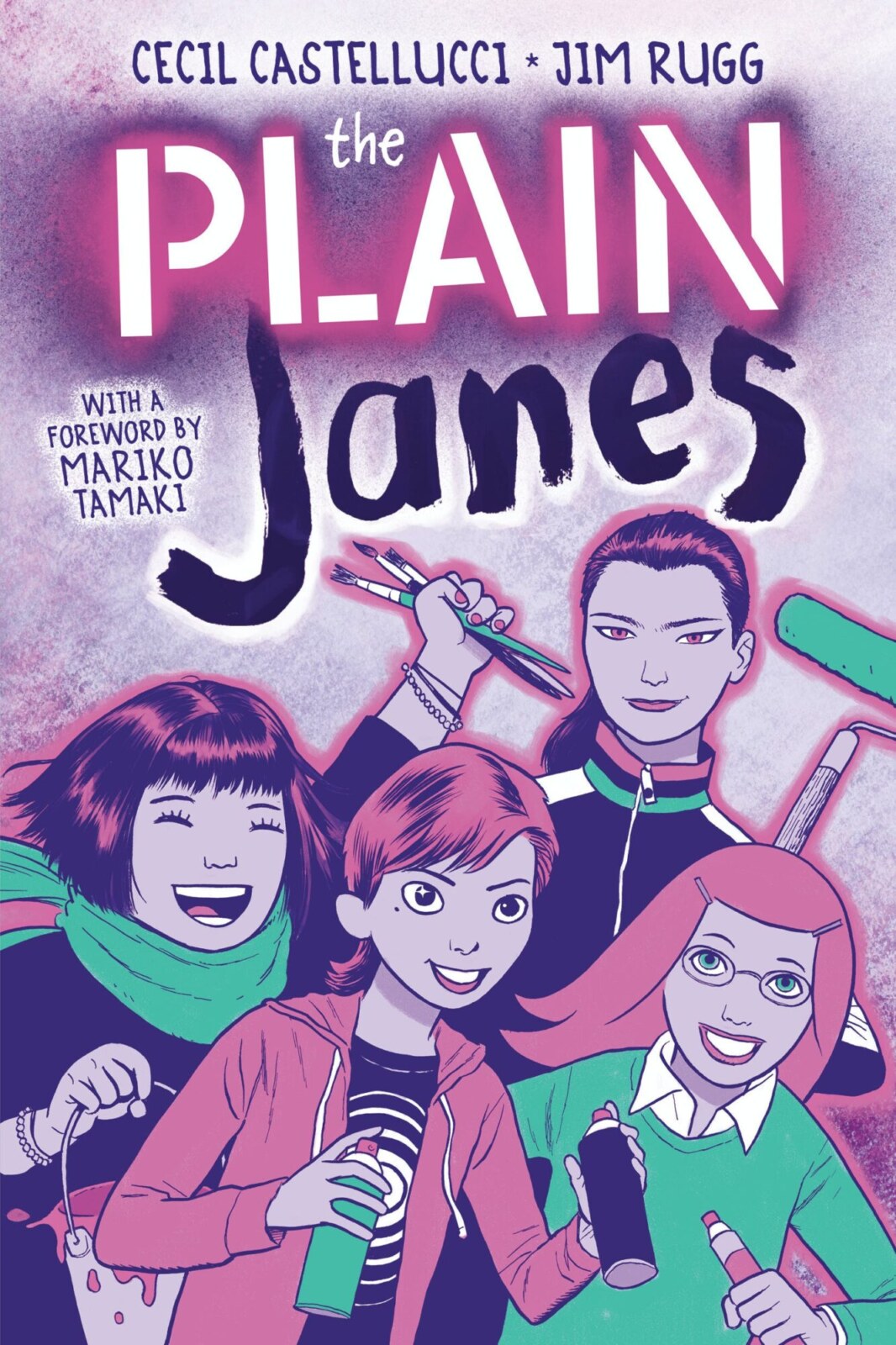
And then, ‘The Plain Janes’ came out right after that, and The Plain Janes was my second comic that followed the original ‘Street Angel’, which is kinda cool…the editor, Shelly Bond, at DC Comics’ Vertigo imprint saw ‘Street Angel’, and that’s what lead me to ‘The Plain Janes’ originally–and this was like 2006 or so. Her plan was to do a Young Adult line of graphic novels, and The Plain Janes was their first release–and I did it with Cecil Castellucci, the writer, who I talked to today, co-incidentally. She’s great–I love her. It’s about these girls who are sort of the outcast misfits in this school–and a popular girl is involved in a terrorist bombing, and her family is paranoid, and they move from the big city to this suburb. And she recovers, and is sort of fine, but she has PTSD. But whenever she goes back to school, she’s looking around, and it’s like, she’s been the popular girl, and that was not rewarding–and this is her chance to maybe do something different. And she ends up befriending the misfit table at lunch, and they all start doing things together. And one of the things they do–she’s interested in art–and they start doing public guerrilla art and it’s their way to make the suburbs a little more exciting to them. DC Comics published two volumes of this–and it did okay, but the line didn’t do well over all. I don’t think anybody knew how to sell it yet because it was the first Young Adult graphic novel. And so, it went away, and the Young Adult graphic novel market exploded over the next decade; we got the rights back; we sold them to Little, Brown and Company, and they commissioned us to finish the story, because we had an ending in mind. So, it’s ultimately three volumes long, and Little, Brown and Company printed it in one book, which is great! It’s 500 pages, and I call it my Shojo [One Piece] manga.
Congratulations! Well, Thank you very much, Jim, for the in depth interview!
Alright, thanks Sean, it was good talking to you–have a good day.
Okay, you too.
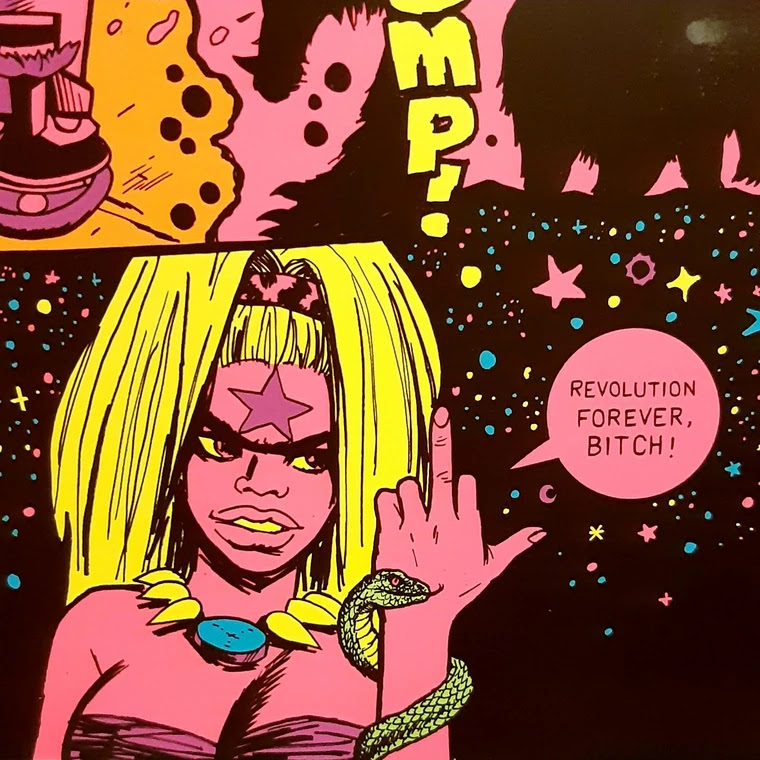
Sean Mageean
Jim Rugg Official Website / Facebook / Instagram / Tumblr
All photo materials are copyrighted by their respective copyright owners, and are subject to use for INFORMATIONAL PURPOSES ONLY!

